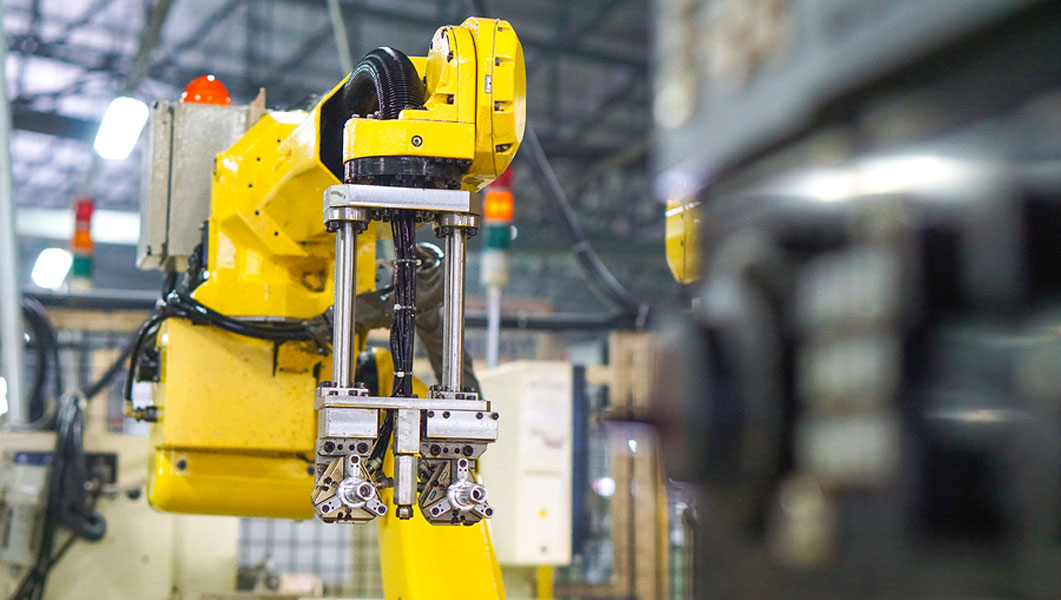For several years now, the role of robotic automation has been changing rapidly, and has become a far cry from the simple robots which would perform repetitive motions on an assembly line in factories. Because of the enormous potential offered by robotic automation, it continues to be an area of intense research and experimentation, which in turn has provided numerous opportunities for achieving additional benefits in machining and manufacturing. Operating both on a standalone basis and in collaboration with humans, robots are achieving a great deal these days, and the potential to achieve even greater things is on the horizon. Here are some of the most notable achievements of robotic automation.
Automation is simplified by redeploying robots
Between collaborative robots and fixed industrial robots, are a third type of robots known as redeployables, which are mounted on platforms that allow them to move easily between machines. This kind of versatility extends their usefulness and saves a great deal of time on installation.
Greater interconnection between automated systems
As recently demonstrated, it is no longer necessary to install a fixed track for automated vehicles in a factory setting. A smart, self-guided vehicle can pick up parts being loaded by one robot, navigate its way around people and other obstacles, and deliver them to an unloading robot somewhere else in the factory.
Robotic automation works well with 3-D printing
One of the most essential components of any automated robot is its gripper, and 3-D printing provides an excellent way to produce customized grippers efficiently and quickly.
Machining manufacturers are adapting to robots
Add-on automation modules are being developed by manufacturers to accommodate having a robot enter through one end of a grinding machine. Doors are still made available for an operator, but a separate access is provided for robots to allow for temperature control and greater safety.
China is a world leader in robotic automation
The government of China has made an intentional and massive effort to emphasize robotic automation technology in that country. Wherever it is possible to use robotic automation, China is attempting to implement the technology, so as to advance its efforts toward modernizing machining and manufacturing methods.
Robotic automation does not replace human labor
In years past, it was common for people to think that robots would replace human labor to a great extent. That thinking has now been altered, and it is quickly becoming understood that robotic automation, especially in the form of collaborative robots, can be a tremendous complement to human labor rather than a replacement for it.
Collaborative robots are reviving old machines
Older machines which have previously been considered lower-performing tools or machines, are finding new uses when combined with inexpensive collaborative robots. Without the need to supply any kind of integration, programmed actions of collaborative robots can automate the usage of older machines, so they can add value to the manufacturing process again.
Robots can be used for inspections
One of the repetitive actions which can be performed by robots is inspections of all types. All that’s really necessary is programming a robot to perform all the necessary inspection points, and to detect any variations from standards provided. These types of inspections can be even more accurate than those performed by human counterparts.
Tight spaces can be addressed by robotic automation
Robots can be programmed to operate in very tight spaces in a factory setting when it is necessary, and this can be extremely valuable, since human labor would be much more difficult in such cases. 3-D printing has been found to be very useful in prototyping the complex motions required by robotic automation in tight spaces.
Robots are creating the need for human labor
In an ironic turn of events, the increased usage of robotic automation is driving the need for creating additional positions for humans. Robot coordinators are needed in all those facilities where multiple robots, or robotic automation, are employed for manufacturing and machining purposes.
Velocity Metalworks has become recognized as a valued partner in the metal stamping industry for our strong Tool Design and Build competency. This, combined with our metal stamping capacity, precision machining services, and EDM capability make us a full service provider that can deliver value in your tooling and stamping needs. Contact us today to see how we can help you work even better.

